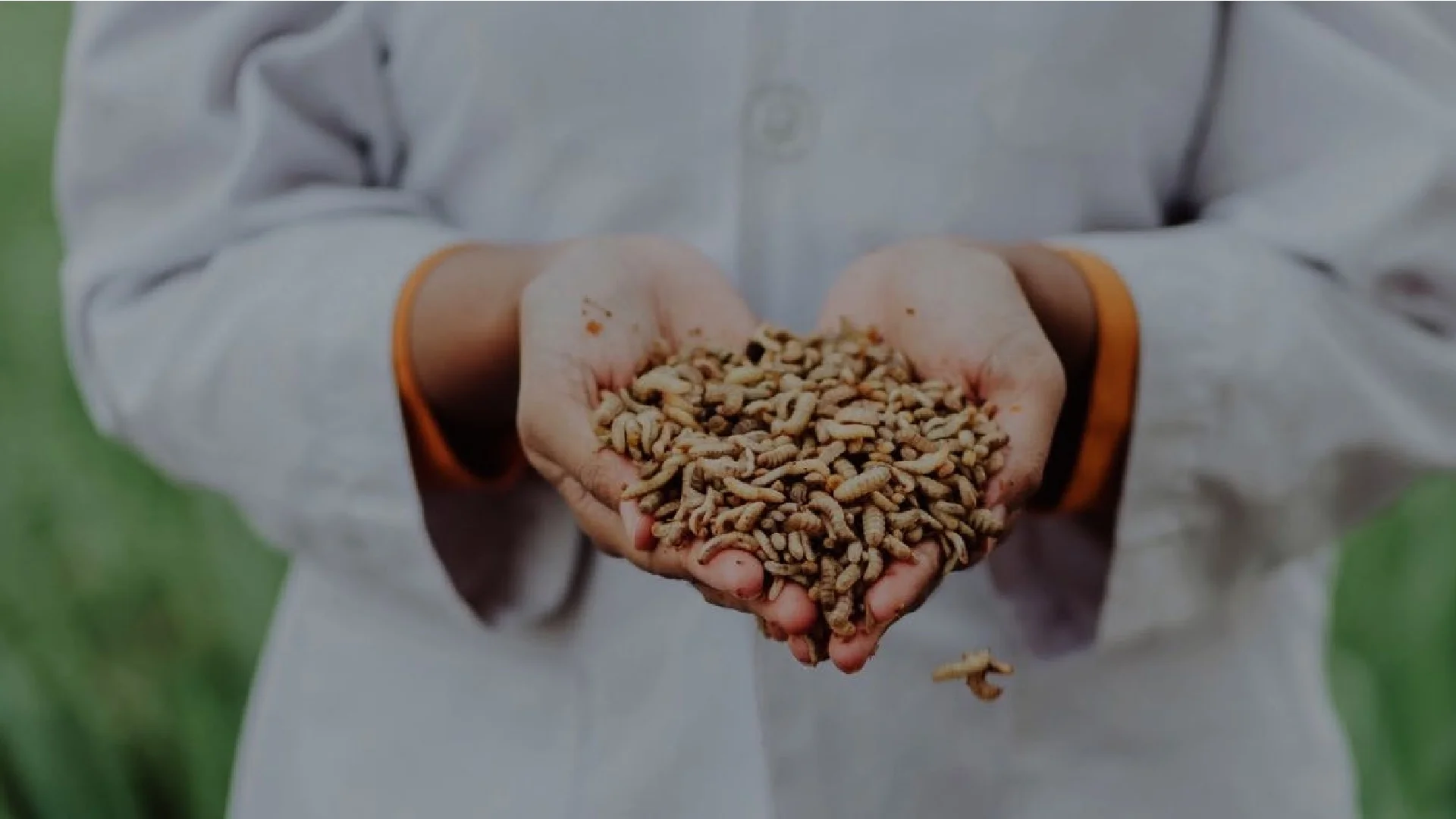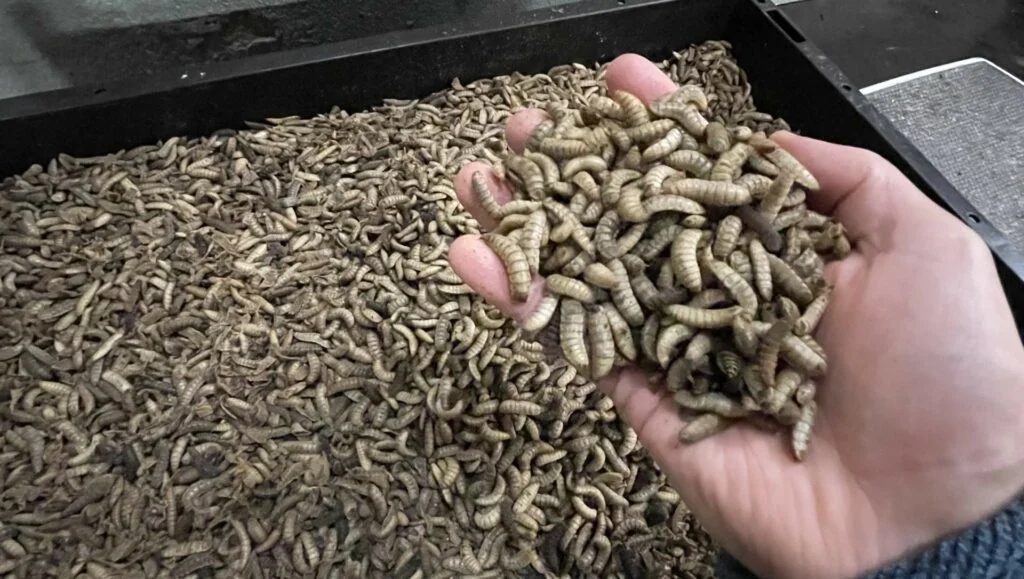
How to start BSF production and scale it up profitably?
We’re often approached with direct questions about the price of the Manna MIND climatization technology, the overall costs of BSF production and a Black Soldier Fly farm that is operated by the Manna MIND unit, and can we help set up a BSF factory. And we almost always respond, “Hold your horses!”
“Hold your horses” means, that you need to learn to walk before you can start running a marathon.
The way we see it, you need to start with the basics, learn your ropes, so to say, and scale up your production only when you’ve tested your assumptions, calculations and learned the BSF rearing process in small scale.
You see, failing, changing your plans or to pivot your business case is all so much cheaper, faster, and less risky in small scale, rather than having already committed to hundreds of thousands or even millions of dollars investments or certain input and output capacity without really knowing how to do it.
This is the “fail fast, fail cheap” strategy, that I’ve written about already in earlier articles. And it doesn’t mean that your plans will necessarily fail, at least not all of them and every detail, but we’ve seen literally hundreds of plans, which of only a very, very small number has remained the same throughout the journey from zero to BSF hero. Most people and companies need to revisit their plans before they’re really ready to scale their BSF production up to professional or even industrial (factory) level. And that’s totally cool, it’s a learning curve to everyone, no exceptions! Been there, done that!
And we think everyone should do this journey in a controlled manner, taking relevant steps forward once they’ve learned the step they’re at, to avoid unnecessary risks and loss of money, sleep or health.
Step 1 – Learn
Learn the basics first by reading and listening all content you can get your hands on. Learn from others’ mistakes, successes, and avoid trying to invent the wheel once again, but rather take the best of everyone else and copy the best practices. Yes, copy, that’s not bad, nasty or mean, it’s just common sense. And no, it doesn’t mean you should infringe someone’s copyright or other immaterial rights, but rather learn, not steal!
For learning from a validated pool of research papers, practical hands-on experience and whatnot, we’ve collected a wide range of materials to be accessed in the form of a knowledge base, webinar recordings and actual training courses in our Insect Farm Hub for FREE!
Yes, you may call us crazy for sharing this much information for free, but we believe that sharing knowledge is beneficial for all of us operating in this industry – when the industry at large succeeds, it will bring new opportunities, funding, changes to legislation, support, more people, potential customers, suppliers, partners, and who knows what, to all of us!
And yes, we do offer in-depth paid training courses as well for those who are ready to scale their business up, but the basics to get started in BSF farming is all there for free, and more content is added frequently!
On top of that, the FARM Hub has an AI assistant who can answer questions from just about all aspects of BSF production, and its knowledge base is also increased with verified information all the time.
Step 2 – Practice BSF production
Step 2 is a big leap into actually doing things yourself.
You should start by forming your business case into something that others can understand, too, and try to figure out the costs as well as business opportunities related to your plan. A SWOT analysis wouldn’t be a bad thing to draft.
To support your business case, we have published a free BSF business case calculator where you have tips and exemplary fields you might want to include in your plans. This is already a good base to build your business case in a form that can be presented to potential investors or banks. It helps you evaluate the need, the OPEX and CAPEX, and the overall income opportunity.
You can also start using the Farming App, that is built in the FARM Hub. Farming App helps you identify relevant tasks you should do in a certain way and order to make your farming activities a success. It helps managing your workforce, should there be more than one person involved. It also helps estimate your production output early in the process. You can use the Farming App just as a test case and run a “virtual farm”, or you can start farming BSF in your backyard and manage the tasks and all with the Farming App for your actual production.
You should start farming the actual flies to at least some extent, to learn about their behavior, to test different substrate (biowaste or mix of ingredients you plan to use as a feed for the larvae) recipes, to identify potential bottlenecks in your production, and to generally get hands on experience from insect farming. It’s still fairly easy and low cost at this point.
If nothing else, you can show and prove your potential investors or partners that you are already doing things rather than showcasing “slideware”, dreams on paper, that may not have much credibility that you could actually execute your plans. And yes, it is also good practice to gain the knowledge and experience that you can use to train your future employees, to evaluate time and effort (=costs) of doing something, to be the extra pair of hands in the BSF production if something unexpected happens even if you’re not planning to ever get your hands dirty in your planned set up. Just do it!

Step 3a – Become professional
Becoming professional means that you shall take a step towards doing things in a way that makes sense from the business point of view. That your BSF production becomes stable and predictable. That your inputs and outputs remain similar from batch to batch and day by day. That you are able to show the cost structure and business case to someone else – other than your mom – and it makes sense. That you are able to start scaling your business up, either from the technical or business point of view, and can showcase your results to banks or investors to build trust in your ability to multiply their investment in your production and especially in you!
Becoming professional in reality means that you are able to credibly tell your customers that they will receive x amount of larvae in a chosen form every day, week or month, no matter what. That are you able to commit to accepting or acquiring a certain amount of biowaste or other ingredient for your substrate every week or month, and hopefully also getting paid to do so rather than having to pay to get it. Either way, the predictability and stability builds trust in you and your operation, which makes everything easier – and often cheaper for your cost structure or higher income level and better profitability.
Successful BSF production means that you’re making profit for your effort. Getting ROI. Positive return on the invested time, effort and all other inputs.
Step 3b – Scaling up
If your BSF production has been a backyard chicken shack, nets and cages, or other basic infrastructure set up, now is the time to take a step into a more hi-tech set up.
It may be an insect farming container, a warehouse or other indoors production unit, that in this next phase is or will be climatized. Yes, climatization is needed even in the regions where the BSF live naturally. You see, climatization is used to getting those predictable results for sure, always having an optimal breeding or growth environment in your production unit regardless of outside weather conditions, seasons, day or night, rainy season or dry season, too hot or too warm – always, and almost totally without human input.
The Manna MIND climatization device is the world leading climatization technology, already operating over 60 insect farming units across the world in 6 continents. Manna MIND is the most advanced, but also the most affordable climatization technology in the world!
With climatized production you can comfortably start scaling your production up. Investing a bit more in becoming an even more successful insect farmer. These small-ish climatized BSF production units, such as farming containers, can often be used as basis for a bigger production capacity, and with a clever twist!
The twist is, that with modular production units, you can run the production very close to the actual biowaste source or the farm where your end customers are. And you can move it almost anywhere, even to remote islands or other rural places where there is no fixed infrastructure, no electricity, water inlets, etc. You can run the production also at a fish farm.
This is a so called de-centralized BSF production method, that you can combine to, for example, one central place for collecting and handling of the biowaste for several production units, or handling and post-processing your larvae and frass, for further distributing it to resellers, shops, partners, etc. A modular de-centralized production capacity can grow indefinitely, if you choose to do so.
Step 4 – The factory
Once your production is at a big enough level where you feel comfortable investing hundreds of thousands or even millions of dollars in setting up a factory, it’s totally fine to choose that path. In such case, the earlier climatized production unit(s) can be used to breed BSF eggs, to use it/them as a test bench for different substrate recipes, for factory downtime production, and more.
The FARM Hub can be used all the way to monitoring your modular or factory operations as long as there is one or more Manna MIND units in use. The dashboard at the FARM Hub enables you to monitor all the entities from one single instance, and to even remotely change the production settings to some extent.
First things first, start with learning. Even if you’ve farmed insects before, I guarantee that you don’t know everything yet, perhaps you may even have somewhat “wrong” information about the different aspects of Black Soldier Fly farming. You’ll be surprised, I’m almost certain of that.
Learn more about BSF farming in the
Insect Farm Hub!
Manna Insect has launched a comprehensive insect farming platform designed for learning, managing, monitoring and networking. There are tons of free content about insect farming, as well as a lot of paid premium content, that dives even deeper in black soldier fly business.
